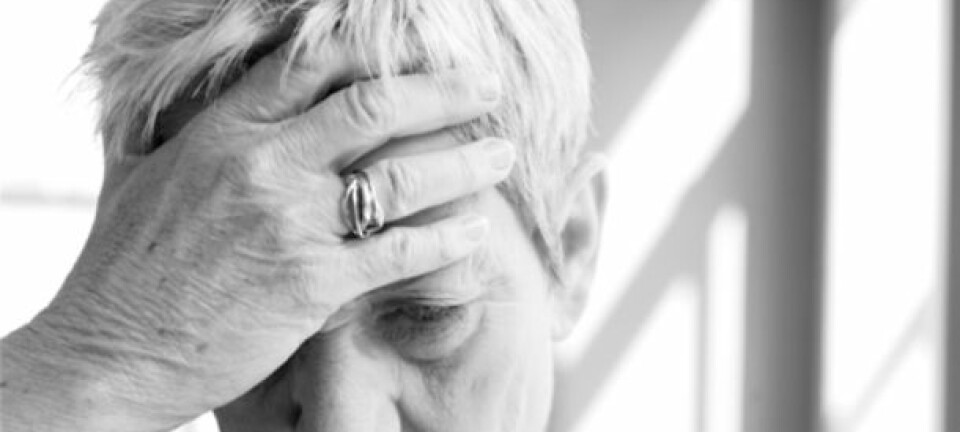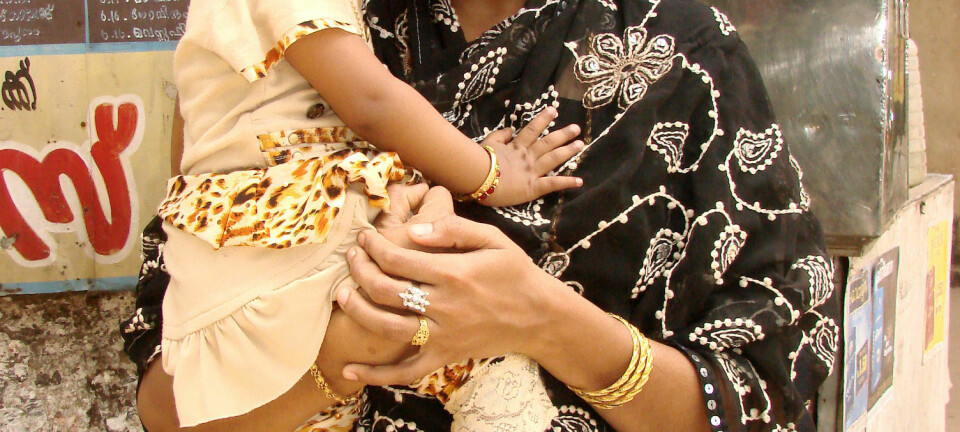An article from Buskerud and Vestfold University College (HBV)

Tailored fibromyalgia treatment using smartphones
Fibromyaligia patients became more active and less pain oriented after participating in a research programme involving a smartphone.
Denne artikkelen er over ti år gammel og kan inneholde utdatert informasjon.
"The time is ripe to increasingly start using e-health tools in rehabilitation efforts, and the smartphone is an obvious component," says Hilde Eide, professor of health and communications at Buskerud and Vestfold University College (HBV) in Norway.
She has led a broad research project which investigated a new method to provide fibromyalgia patients with counseling after having stayed in a rehabilitation center.
The method resulted in patients getting more physically active, experiencing an improved quality of life and giving less attention to disease and the pain that follows.
"Patients who are diagnosed with fibromyalgia have often lived with severe musculoskeletal problems for many years. Very few are cured after a short stay at a rehabilitation center. Most people need a more complex and long-term treatment program," says Eide.
Staying motivated

Through the research programme Stimulating self-management in patients with fibromyalgia through web-based situational feedback, 70 patients were followed up and supervised, receiving written feedback by smartphone after having attended a four-week rehabilitation. Another 70 patients constituted a control group.
"A rehabilitation lights a spark. It often moves patients over a threshold, making them more motivated to master the situation they are in, and to make the lifestyle changes necessary to improve their quality of life. However, it is crucial that this motivation is maintained when they return from rehabilitation," says Eide.
Diary notes
Participants in the intervention group filled in their smartphone-based diaries for four weeks after returning from rehabilitation. This required three daily recordings, specially focusing on their physical activity and exercise, as well as thoughts and emotions related to coping with the desease and the pain that comes with it.
A supervisor with expertise in pain management received the recordings, and replied swiftly with a tailored feedback.
"The guidance was based on cognitive behavior therapy, and the patient's own values and priorities were emphasized. The objective was to support the patient in the use of appropriate strategies for pain management, which were in line with what the patient experienced as important in their own lives," says Eide.
The pain gets less attention
The goal was to see if these methods could support changing health habits and contribute to pain management at home, thus also improving the patients bodily functions and quality of life.
The results were good: among other things, they showed a substantial reduction in so-called “worst case scenario thoughts” amongst the participants.
Worst case scenario thoughts is a form of catastrophic thinking. In this setting it means a maximization of the threat assessment of the pain the patients experience.
"A reduction in worst case scenario thoughts indicates that the patients feel better. They still hurt, but the pain receive far lesser attention. Patients spend less time brooding over their desease, and they have greater confidence in their own ability to cope with it," says nurse and researcer, Ólöf Birna Kristjánsdóttir, who completed her doctoral thesis on the results from the research project.
Effects at least for one year
Participants also reported that they experienced increased acceptance of their own state, increased willingness to be active, improved quality of life and better bodily functions.
"Overall, we see that the disease had less impact on the lives of the patients who received the guidance. Their symptom levels were lower, and their ability to perform everyday activities were strengthened," says Kristjánsdóttir.
Kristjánsdóttir concludes that this type of guidance via smart phone has a special effect in the short term, and lasts at least for six months. It enhances the effect of rehabilitation and those who received guidance showed positive effects at an earlier stage than those who did not get it.
Long-term effects are uncertain, but participants in the intervention group had a greater improvement than participants in the control group, also after one year.
Soon to come
In Norway, health counselling over the Internet and mobile phones are not in use as a service to patients. Professor Eide assumes this will change, and that technology-based health guidance will be an important part of treatment in the future:
"The strength of technology-based interventions is that patients receive guidance where they are, when they need it and when it suits them. In addition, interventions can be tailored to different patient groups and for the different stages of their disease," says Eide.
------------
Read the Norwegian version of this article at forskning.no



































